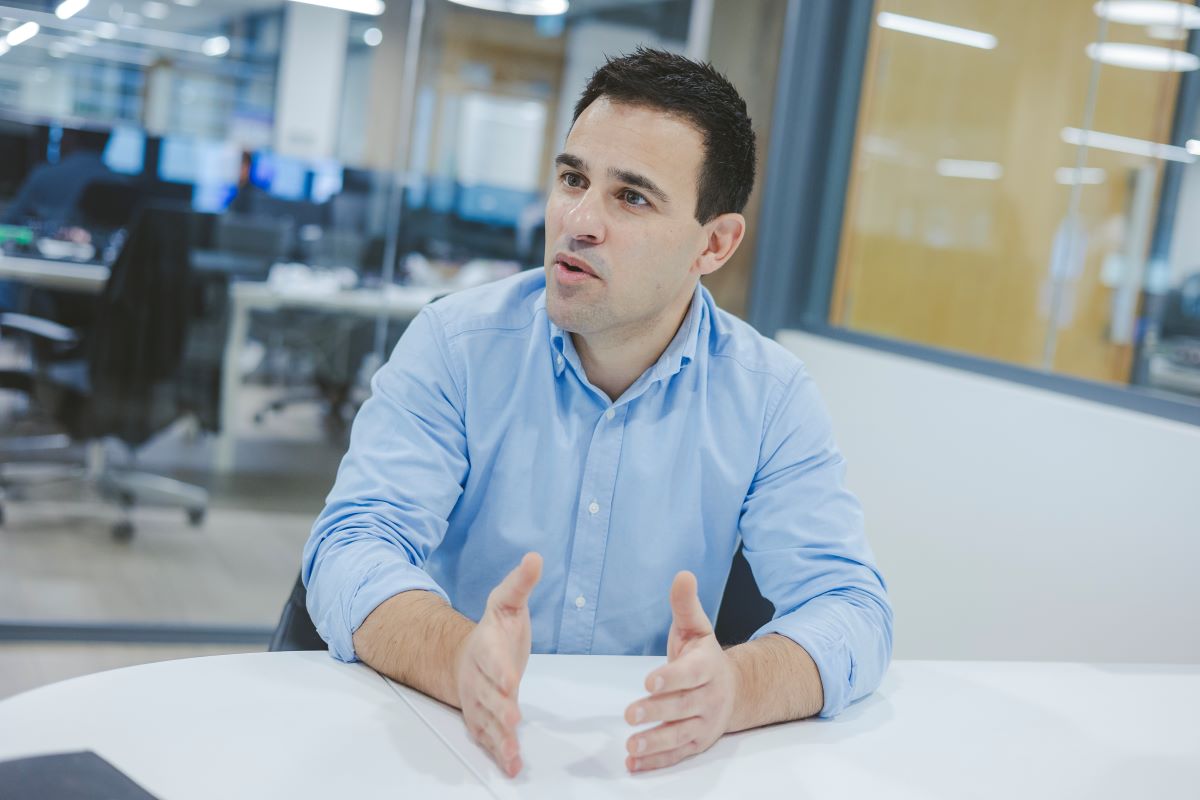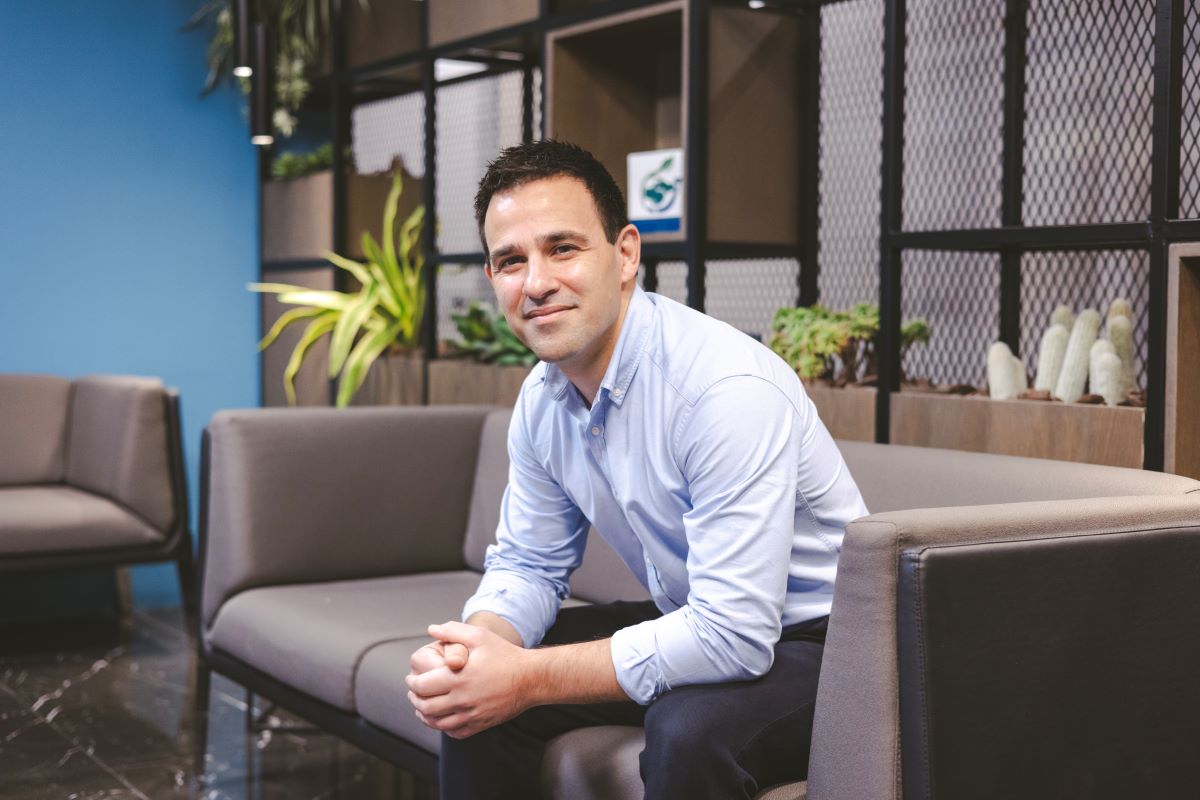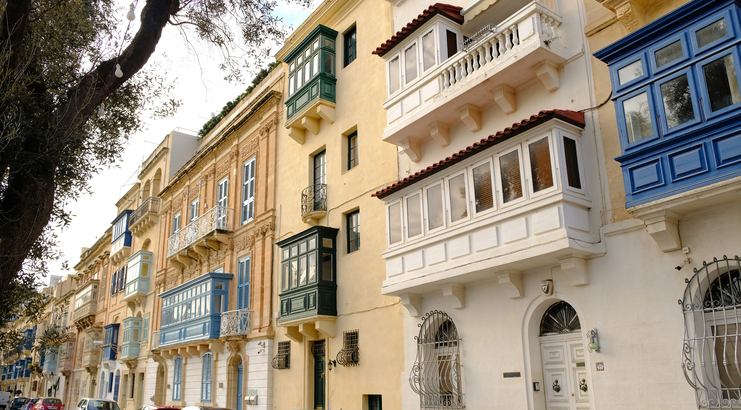What sounds great in theory does not always translate into the real world, with practical applications for a whole host of emerging technologies often thin on the ground.
Not so for the Internet of Things, which has been delivering on its potential and seeing rapidly increasing adoption across a wide range of sectors.
Speaking to BusinessNow.mt, Alistair Castillo, Melita Chief Technology Officer IoT, shoots off plenty of actual use cases the company has been directly involved in, from optimisation of environment and processes to the reduction of waste, and the increase in efficiency across a host of sectors including agriculture, manufacturing, healthcare, and transportation.

Melita IoT connections sustain automobile and bicycle fleet management, farmstock and pet tracking, indoor climate control, and beer keg location, temperature and volume tracking, among others. One area the company has penetrated with considerable success is the implementation of IoT for civic purposes, typically partnering up with municipalities to assist local authorities in achieving their objectives.
“A few years ago, we saw an opportunity to branch into IoT and solidify the position of EQT [Melita’s shareholder] in that domain. That’s when we launched a new brand, melita.io to cater for the distinct needs of the IoT market,” says Mr Castillo. “It follows from our main business – after all, it’s about connectivity. The difference is that, as well as connecting people in Malta, we are now connecting devices all around the world, giving Melita the potential to expand beyond our borders.”
Mr Castillo joined Melita straight out of university, starting out as an engineer but quickly climbing through the ranks to become head of the company’s core networks, a position he retained for over 15 years. Having previously led the core network side of IoT, he was a natural fit when Melita recently reorganised, creating a greater focus on IoT and required a new CTO to oversee its continued development.
“Today, I don’t just work on the core network, but also on development, billing, reporting and provisioning of melita.io, with a total focus on IoT,” says Mr Castillo, noting that the restructuring reflects the “growth we’ve seen in the field over the last years, and the potential for big things to come.”
While the Internet of Things is, by now, not exactly a new concept, nor is it commonplace. So what is IoT, exactly?
“The concept of IoT is to use the internet to link and unite several devices to facilitate communication and data transfer. Doing this enables measuring, monitoring, data analysis, automation, and control with minimal or no continuous human intervention,” he continues, pointing out that the technology is “a key enabler for digital transformation.”
Mr Castillo stresses that melita.io “does not get involved in supplying sensors.” Instead, the company focuses on establishing partnerships with solutions and hardware providers, offering the essential infrastructure which is crucial to the smooth functioning of the IoT.
He also points out that the application of IoT does not need to be particularly capital-intensive, since the infrastructure is provided by melita.io and the sensors themselves tend to be relatively inexpensive. Even better, they are designed to last, often between 10 and 15 years, on a single battery charge, so once the system is up and running it does not require continual investment.
“When implemented in the right areas, IoT can be a major cost saver,” says Mr Castillo. “Obviously you need to have the use case that makes sense for any particular business, and the drive to see its implementation from end to end.”
There are several areas ripe for an IoT revolution, according to the CTO. These include supply chain management and healthcare, where remote patient monitoring with real-time health tracking can significantly reduce the need for in-person appointments and saving considerable resources in terms of beds, nurses and food while maintaining an excellent standard of care.
Agriculture, manufacturing and retail may also find that IoT can bring substantial benefits by promoting innovation and efficiency: “IoT enables precision agriculture using sensors and analytics to optimise crop yield, conserve resources and monitor livestock health,” says Mr Castillo, “while manufacturing facilities can streamline production, reduce downtime and improve preventive maintenance in the manufacturing process.”
The use case of IoT for retail may be less well known, but Mr Castillo explains that the development of things like smart shelves may serve to improve customer experience without having to increase the work done by employees.
“Retailers don’t need to depend on staff constantly hovering around to restock shelves. They can have real-time information on what’s selling and what’s not, while collecting accurate data about the footfall in particular aisles, or even around specific products,” he says. “They can even automate a system to send a text message to clients approaching a product that’s on offer.”

Where melita.io really stands out however, is in the provision of connectivity solutions for smart cities, having already won a fair few clients looking to prevent flooding, monitor and optimise energy and water use, manage traffic, parking and EV charging infrastructure, and more.
The establishment of a distinct division was designed to capitalise on Melita’s digital infrastructure expertise by tapping into foreign markets for IoT applications, a strategy that has achieved significant success.
“Most of our IoT use cases are, in fact, international,” says Mr Castillo. “We have established partnerships with numerous IT solution providers, contributing to transforming many German localities into Smart Cities. Once you have coverage, you can have multiple types of sensors. So one company may provide parking sensors, another bin sensors, and another sensors monitoring CO2 emissions.”
When asked whether Malta is ready to launch similar initiatives, the reply is an assured “yes”: “Locally, parking sensors in localities seeing heavy traffic pose clear benefits. They’re simple, not very costly, and provide substantial benefits to the environment, the economy, and individual comfort.”
Smart bins that inform the waste collector when they are close to full is an area where IoT is successfully used locally, and which could be further explored, with Mr Castillo highlighting the important role measurement plays in upgrading the infrastructure so essential to quality of life.
“Once you start measuring, you start forming dots. Once you have enough of them, you can start drawing the lines. But unless you start measuring, you can never know enough to take decisions and implement new solutions,” he says.
“What we’re seeing is the evolution of IoT from a monitor and measure use case to automation and control,” continues Mr Castillo. “It’s moving beyond simply measuring, say, soil humidity levels, to then automating an action, such as turning on the watering system. If A, then B.”
The extension in IoT’s functionality is the result of a shift in mentality as the technology becomes more widespread: “People realised that once you are collecting data from all these sensors, the next step is to use the same technology to actually take automated action.”
melita.io Connectivity Solutions
What melita.io offers is a vast range of connection technologies for most IoT implementations. Most of these – 3G/4G/5G, NB-IoT and LTE-M use the existing mobile network, while LoRaWAN operates on licence-free radio frequency. Each type of connection has particular features suited to different applications.
For example, while 5G provides the fastest connectivity, it presents potential issues in certain areas, like remote places or underground locations. It is also power-intensive, decreasing sensors’ battery life. However, it is ideal for applications requiring the transfer of large amounts of data, like self-driving cars, telemedicine, video surveillance and extended reality.
NB-IoT is more cost-effective, uses less power (batteries can run for 10 years or even longer), and has deeper indoor coverage, making it ideal for applications with small data requirements. Intended for stationary or slow-moving devices, it is often used for smart metering, asset tracking, environmental monitoring and wearables.
A notable use case for NB-IoT was developed in a beer keg tracking project in collaboration with Binary Beer. “In this use case,” shares Mr Castillo, “sensors are placed inside the keg to track its location and measure the temperate, ensuring that the beer is always kept in optimum conditions, even during transportation, to provide the consumer with the ideal drinking experience, every time. It also triggers an alert when the volume reaches a certain level, allowing the distributor to optimise delivery routes to those places that need the keg to be replaced, saving on fuel costs and reducing the total carbon footprint of each glass of beer.”
LTE-M, using the mobile network, sits in between 5G and NB-IoT in terms of data rates. It provides a balance between speed and coverage while supporting mobility, as it enables devices to move between cell sites while maintaining connectivity. It can be used for smart metering, and in industrial applications requiring moderate data transfer rates, such as predictive maintenance applications.
The LTE connection is used in a product developed by a local partner for an insurance company, allowing it to monitor driving habits, car speeds, rate of acceleration and braking using smart sensors and telematic devices. By offering careful drivers discount rates, it was able to attract new customers while reducing the cost of insurance risk. Faults also became easier to determine through speed and braking distance data.
Finally, LoRaWAN is long range, low-power, and cost-effective, making it ideal for smart city applications, smart agriculture, and environmental monitoring. Sensor battery life may last between 10 and 15 years.
“This is a totally different tech operating in the licence-free radio spectrum,” says Mr Castillo. “It needs a gateway, which then connects to our infrastructure.”
The cheapest of all the options, LoRaWAN is comparable to NB-IoT in terms of data transfer capabilities. However, it can operate where mobile signals do not penetrate, such as deep underground or in very remote areas.
In Meissen, a town of around 30,000 in east Germany, the municipality integrated a LoRaWAN solution – powered by melita.io – enabling data-driven decisions to minimise environmental impact. The sensors allow it to optimise several functions ranging from waste management to water-supply monitoring, benefitting citizens, businesses, and significantly reducing environmental impact.
Similarly, in Maintal, a town close to Frankfurt with a population of 37,000, melita.io partnered with HEY iiOOTE to establish a LoRaWAN network with the aim of improving safety measures and overall quality of life. Noise measurements, humidity sensors, and monitoring systems for doors and fire protection were implemented, enhancing services and living standards for the community.
Mr Castillo stresses the importance of partners who understand what is best for any particular use case: “Anyone exploring IoT should be careful to ensure that the partners they work with can provide different technologies. If a company only provides 5G, for example, the end-user might end up paying far more than is necessary, while performance might suffer.”
Indeed, Melita’s “purposeful selection of diverse technologies is designed to address a broad spectrum of use cases on a global scale,” with each technology’s specific advantages and limitations taken into account when designing the implementation of each application.”
The CTO concludes by noting that Melita’s approach is technology-agnostic, facilitating multiple networks per country and establishing a nationwide LoRaWAN network in Malta and Germany. As a global IoT connectivity provider, it covers over 170 countries and collaborates with more than 280 mobile roaming partners, offering multiple connectivity options per country and always connecting to the strongest signal in the area. Its 30 years of telecom sector experience also allows it to bring extensive expertise to the field.
Meanwhile, its diverse partner ecosystem includes leading industry players and innovative start-ups alike, simplifying the complexity of IoT solutions.
Managing the Internet of Things
melita.io provides customers with dedicated portals to remotely track and manage usage. Users of its mobile connectivity solutions can use the portal to optimise performance by, for example, configuring the conditions that automate an alert or action. Another portal, specifically designed for LoRaWAN sensors, can be used to enrol new devices, add offers and remotely manage activity.
Both portals are provided for free, highly secure, and come with a set of APIs for integration into melita.io’s partners’ own applications used by end users.
“Our clients can embed these features into their own portal,” notes Mr Castillo. For example, a condominium management company can provide its users with a single portal to manage the sensors as well as their connections, allowing them to see where the sensors in a particular building are, what they’re doing, what they’re being billed, and also take specific actions like setting heating and lighting.”
The portal has all the features required to manage the entire operation from a single place, whether it’s 100 sensors or 100,000. It includes SIM and sensor management functionality, the ability to view details about the package, usage reporting and visualisation, extended monitoring and the possibility of triggering notifications, search and filtering functionalities, labels and groups, the ability of enrolling new sensors, support requests and notifications, billing and payments, and user profile management.
Featured Image:
Photos by Inigo Taylor
Għajn Tuffieħa Bay named ‘most beautiful beach in Europe’ for 2024 by European travel platform
The results are based on the votes of 103,224 worldwide travellers
MDA says April 2024 broke records with value of promise of sale agreements surging by 14.4%
A report from the MDA highlights that there were 1,385 promise of sale agreements last month
1,695 businesses found employing non-EU workers illegally in 2023
The figure amounts to a significant portion of all employers in Malta






